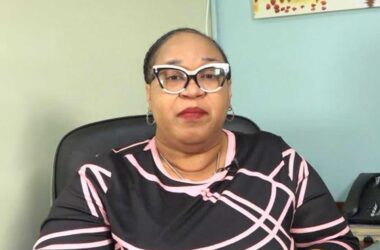Issues pertaining to the youth initiative was very much in focus when officials gathered here, on Tuesday, for a media forum to plan for the 53rd Annual Meeting of the Caribbean Development Bank (CDB).

Prime Minister and current Chairman of CDB Board of Governors, Philip J. Pierre, highlighted a need for greater engagement of youth in development plans. According to the Prime Minister “Our young people are the primary agents of change and a key to reform and rebuild our region. They possess unmatched levels of innovation and creativity and in them we can find the solutions to some of our development challenges and emerging opportunities.”
The meeting, which will be hosted in Saint Lucia in June of next year, is CDB’s flagship event.
At this week’s media forum, CDB President Dr Hyginus “Gene” Leon, encouraged the future leaders to become more actively engaged in the region’s advancements. CDB’s President spoke to the multi-faceted nature of development emphasizing that “Development is a holistic process that is social, financial and environmental and addresses the needs of the people, the country and the planet.”
The need for partnership and relationship building was key especially with young persons since they are not only engineers of hope but would inherit the rewards of the work currently being undertaken. The Bank recognises that young people are the primary agents of change and as societal building blocks possess unmatched levels of innovation, creativity, and technological aptitude and continues to work to achieve positive youth development in its Borrowing Member Countries.
Under the theme , “Marshalling Finance for Development: Access to Adequate and Affordable Finance” the agenda seeks to foster partnership with the CDB to access a regional and global platform ‘for advocacy and actions on issues that are critical for the achievement of national and regional development objectives’.
PM Pierre stressed that he would utilize this platform to promote two issues of regional importance; Social and Economic Empowerment of Youth – termed the Youth Economy, and Access to Adequate and Affordable Finance for development.
Noting the complexity of the unemployment situation in the region, and most particularly among the youth population, he disclosed that, “Approximately 70% of our region’s population is comprised of youth 15 to 24 years, and 25% between 10 to 34 years.
“Given this wide youth demographic, the potential contribution to social and economic development is significant, however, for this potential to realize, optimal engagement of our youth to the economy is pertinent.”
The prime minister stated that the unemployment rate among youth in the region is too high, with figures ranging generally from 18% to 47 %, “and that average youth employment is more than three times that of adult employment…while the situation is more severe for young women.”
PM Pierre asserted: “It is important that an environment is created for young people to be allowed the opportunity to engage in the activities that they enjoy. Our education system must be adjusted to reduce the mismatch between the skills required for the workforce and the skills available to our youth.”
Representatives of the Saint Lucia National Youth Council (SLNYC), President Ajani Lebourne and Mobilisation Officer Earlyca Frederick had their say, putting forward a case on behalf of the youth.
While noting that about 60% of the region’s population is below 30 years old, Lebourne stated, by virtue of this demographic “and the recognition of the youth’s continued contribution to national development, it is imperative that our economic and social structure reflect this reality.”
He added: “Access to services is a key principle articulated in the Saint Lucia National Youth Policy. This policy recognizes the need to provide equitable access to resources and services required to fulfill the physical, economic, and social needs of young people.”
Currently, he said, several programs and institutions exist “to educate, train and empower our youth to take charge of their futures.”
The SLNYC officials also expressed a need for economic restructuring, where young people are actively supported as the drivers of emerging industries. They renewed their call for the reorganisation of local economies to better serve youth as key contributors. “Strategic investments in young people offer the returns of sustainable and resilient economies,” they stated.
The new CDB Chairman stated that, “It is important that an environment is created for young people to be allowed the opportunity to engage in activities that they enjoy. Our education system must be adjusted to reduce the mismatch between the skills required for the workforce. Despite greater access to education and health care than previous generations, our young males and females, across the Region, are among those who disproportionately bear the burden of poverty, marginalisation, and exclusion.”
The Caribbean Development Bank (CDB) is increasingly advocating for new approaches to resolve longstanding development issues faced regionally to address and accelerate meaningful development. The Board of Governors is the highest policy-making body of CDB and meets annually in one of the member countries of the Bank to shape the work and agenda of the regional financial institution.
Fredrick noted that, “Strategic investments into young people offer the returns of sustainable, resilient economies. In St Lucia and across the region …the key question is: ‘How can authorities’ ensure that adequate and affordable financing translates into accessible and sustainable services for young people?”
The SLNYC official asserted: “The concept of a Youth Economy to turn hobbies into entrepreneurship and skills to business, speaks to a critical and tiny policy shift which demands coordination across various fronts.”
Fredrick added: “We anticipate that the development of the youth economy leads to a broader discussion on youth and their participation in the economy and the related issues of youth mainstreaming, resource distribution, inclusion and education.”













